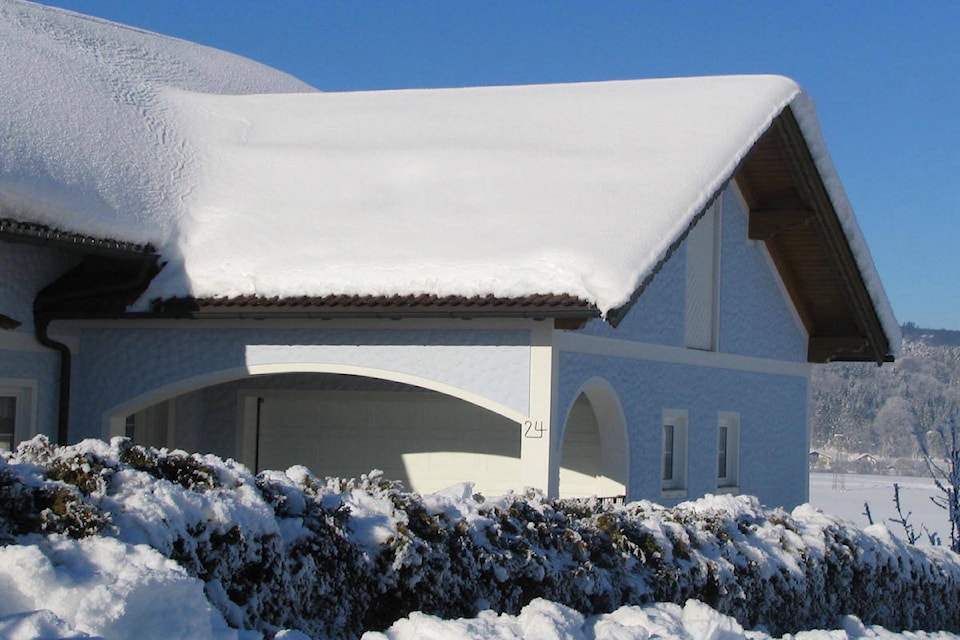By Freddy Marks
Nothing beats a great pair of wool socks for keeping you warm in winter, except a dual heating system that works even when the grid goes down.
A back-up heat source is not just for eccentric preppers: a short- or long-term grid power outage during the winter has the ability to put you in a serious survival situation. A friend of mine, who moved to the Cariboo Region near Interlakes area, recounted a story about her New Years Day in 2017.
She awoke at 8 a.m. and before she could get to the kitchen to put on a pot of coffee, the power went out. It was -30 C outside. Her pellet stove that had been running all night quickly back-drafted smoke into the house and died out, and the propane forced-air furnace was silent. She thought she was prepared: she had a portable 4000-watt gas generator, but the generator was stored in her unheated porch room. At -30 C, it was frozen and would not start.
She got into her snow suit and sorrels, and hauled the generator into her rapidly cooling home; after about 30 minutes, it finally turned over. She got the generator back outside on a safe, level surface and ran an extension cord through a slightly open window to a power bar on the living room floor. Into this she plugged in her pellet stove, then went through the process of cleaning out the fire box and restarting it.
RELATED: REAL ESTATE: Winter home sales can bring in cold, hard cash
It was then she realized she had no way to flush, and headed off to wade through four feet of snow to the outhouse to take care of business. She said it was so cold her bottom froze to the seat. As she trudged back to the house with a frozen derriere, she realized the heat tape would be out on the exposed water lines under her home, putting them in danger of freezing. She had to make a decision: locate her water key and let the house drain back before it froze, or try to set up another extension cord to the heat tape. She chose to drain the water line instead of letting extremely cold air under her home.
Her day got even better when she realized that she was not supposed to refill the gas generator while it was running, but the pellet stove takes over 40 minutes to power down properly in order to turn off the generator and refill it.
After eight hours of playing winter survivor she was tired, cold and scared that this could be her necessary routine for the rest of the night or even days. The power stayed out until 10 p.m. that night, and the temperature stayed below -20 C all day. Since that incident, her generator is always stored inside in the winter and she had a transfer switch installed in her electrical panel to plug in her generator directly, allowing her to power the absolutely necessary appliances to keep her home from freezing.
A transfer switch enables you to run a cord from a generator to a dedicated receptacle that feeds a small “critical load” sub-panel. For the most part, a generator doesn’t need to back up your entire house, just vital appliances and electronics. Depending on the wattage of your generator, it can run your furnace and electric appliances including your well pump and heat tape. The transfer switch prevents you from back-feeding the utility grid by isolating your generator from the main panel, ensuring you don’t endanger the grid and the brave men and women out trying to fix the problem. If you depend on a portable generator for your emergency home power needs, contact an electrician to properly install a transfer switch to make this type of back up safer and more efficient.
Back-up generators can also be hard-wired into your home power system, and they can be propane-, diesel- or gas-powered. The damp cold we experience during our Lower Mainland winters can be just as uncomfortable in a power outage as the deep snow and frigid temperatures that are experienced in the north.
RELATED: ‘Rather mild’ winter expected in B.C. this year
Many homeowners are choosing to install a permanent standby generator system that runs off the existing natural gas or propane fuel supply. This type of system is more expensive to install, but automatically starts up when the power goes down, ensuring that your home never loses power, even when you are not there. These permanent standby systems can cost from $5,000 to $10,000 depending on the size and wattage requirements, but the cost of emergency renovations after freeze up can be even more costly.
For new home buyers and existing home owners, evaluating a home’s winter emergency preparedness is part of your due diligence. A back-up heating and power system should be at the top of your priority list. Having a fireplace, wood stove, or wood cook stove is a great start, and it can keep you warm eating cooked food for a short time. But a long-term situation without running water can quickly become a health issue in an urban environment.
Emergency preparedness is part of being a responsible homeowner, and protecting your family, animals and the biggest investment you have should be one of your foremost priorities.
news@ahobserver.com
Like us on Facebook and follow us on Twitter
